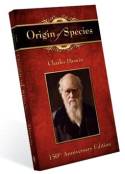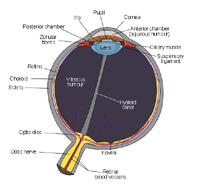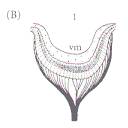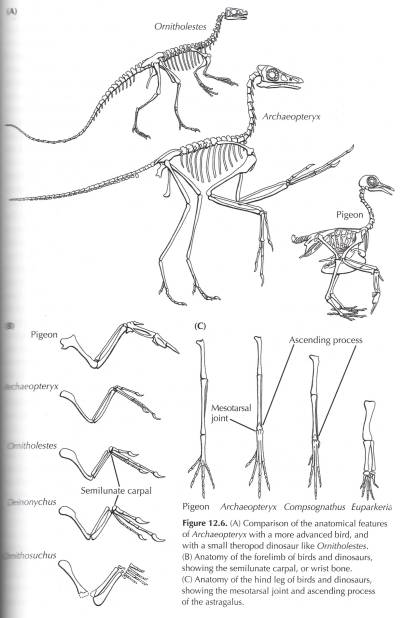Books, A Year in Review - 2009, Part II
 Here is the second part of my review of the books I read in the last year. Part I was an analysis of my reading habits, while this entry will give a brief review for each book.
Here is the second part of my review of the books I read in the last year. Part I was an analysis of my reading habits, while this entry will give a brief review for each book.
In year's past, I've made a point to mention my favorite books of the year. The problem this year is that I liked so many of them, that it was hard to weed this list down. Anyway, my favorites from fiction were Anne of Green Gables and Luncheon of the Boating Party. My favorites from nonfiction were Evolution: What the Fossils Say and Why It Matters, Microcosm: E. coli and the New Science of Life (Zimmer is one of my favorite authors), and Death from the Skies.
You can jump directly to the review of any of the books by using the links below.- House of Stairs
- Coraline
- Anne of Green Gables
- Percy Jackson and the Olympians Series
- Brisingr
- Twilight
- Luncheon of the Boating Party
- Angels and Demons
- Evolution: What the Fossils Say and Why It Matters
- God-or Gorilla
- Your Inner Fish: A Journey into the 3.5-Billion-Year History of the Human Body
- The Greatest Show on Earth: The Evidence for Evolution
- Microcosm: E. coli and the New Science of Life
- Death from the Skies
- Egyptian Book of the Dead
| I bought this book for my daughter, because I remember liking it so much when I first read it. However, since I hadn't read it since elementary school, I thought I'd read it again to refresh my memory. I still liked it. It's a somewhat dystopian future story, but its focus is on a small group of adolescents, so it doesn't really get into the society at large. Without giving away too much of the plot, these adolescents are trapped in an environment with nothing but stairs as far as they can see in every direction. There's a mysterious machine that gives them food and water, but only when they behave in certain ways. |
|
This is a story about a little girl named Coraline, who feels a bit neglected by her parents. She discovers a mysterious door in their new house that leads to a strange world, much like her own, but populated by people with buttons on their eyes. Her 'other mother' tries to convince her to stay, and Coraline must find a way back to her world. This book has now been made into a movie. I saw the movie for this before reading the book. As usual, the book was better. |
|
This book is a classic, having sold over 50 million copies since it was first published in 1908. After reading it, it's clear to see why. The book is about an orphan girl, Anne Shirley (that's Anne with an 'e'), who gets mistakenly delivered to an unwed brother and sister, who had originally requested a boy to help them out on their farm. In short order, the brother and sister take in Anne, and the rest of the book is about her adventures growing up in the small coastal village of Avonlea. The book is more a series of short adventures, without a strong overall plot. There were several reasons I liked this book. As a father of a 10 year old girl myself, I could definitely put myself in the place of Matthew Cuthbert. It was easy to see the story through his eyes. There were also all the little historical details, such as preparing for an all day trip to town when the town was only a few miles away, or preparing dinner in an era without electricity or gaslines. Although this book is often thought of now as a children's book, when Lucy Maud Montgomery first wrote it, she intended it for audiences of all ages. I recommend this book to any parent. Montgomery went on to write several more books about Anne. I may have to find the time to read them. |
Percy Jackson and the Olympians Series
|
My daughter got me started on this series. Obviously, it's pretty popular - the boxed set of the first three books is currently at #168 in Amazon's best selling list, and a movie based on the first book is coming out in a few months. The series is about a young man, Percy Jackson, who turns out to be a demigod - the son of a mortal mother and godly father. In the story, the classical Greek gods are real, and still influencing the modern world. And as could be expected (otherwise it wouldn't make for an interesting story), some of the mythical beings are causing problems. Percy and his demigod friends must go on quests to save the day. I liked this series well enough. It was written from Percy's perspective. Staying true to how a 12 year old would write, the style takes a little getting used to. There's adventure, but the stories are never too serious (a few people do die, but when you're dealing with mythology, and dead people continue existing in the fields of Elysium, death isn't all that tragic). My 10 year old daughter really liked the series. She even read the final book of the series during the summer. And through the series, she learned quite a bit about mythology that she wouldn't have otherwise. True, these stories are adaptations of the classic myths, but I think it's still a great way to get kids interested in those myths. |
|
This is the third book in the Eragon series. The author, Christopher Paolini, was only 16 when he wrote the first book. Although he originally intended the series to be a trilogy, once he got into the writing of the third book, he realized he needed to split it into two books. The title character, Eragon, is a young man from a small village in Alagaesia. The region is under control of an evil dictator, Galbatorix. The lands used to be protected by dragon riders, and Galbatorix had even been one of the riders. But, in his ruthless quest for power, he killed every last dragon rider and every last dragon so that he would be supreme in his power. This series has become very popular - a best seller that spawned a movie adaptation. I think when something like that happens, there's a certain segment of the population that becomes extra critical of the book, and that's what I notice in other reviews I read of this series. Certainly, Eragon isn't the best fantasy series. It doesn't come close to the Lord of the Rings, and some of the plot elements are not very original at all (imagine Star Wars with dragons instead of X-wings). But I think that as long as you keep your expectations reasonable, it's a very enjoyable book. I also very much enjoy the digressions into philosophy and morality. Eragon is growing up in a world with many different peoples, many different philosophies, and many different religions, which leaves him wondering how to make sense of it all. Paolini doesn't overdo these digressions - just enough to be interesting. I would certainly recommend this series. I'm looking forward to reading the fourth and final book when it's released. |
|
I usually try to avoid learning about a book as much as I can before reading it. I don't want preconceptions or expectations to ruin the story. Usually, that works out pretty well, but this book is a perfect example of how that can go wrong. About all I knew about this book before starting was that it was a monster book about vampires in high school, and that it was popular enough to have been made into a movie. So, I was expecting a typical fantasy book. About two hundred pages into it (the book's 544 pages long), I remember thinking to myself that the book had a pretty slow start, but I didn't really mind the author laying the groundwork for character development, especially considering that it was a series with far more to follow. About a hundred pages later, I realized that this wasn't just laying the groundwork - this was the plot. This wasn't a fantasy! It was a romance, wrapped up in the guise of fantasy. It's not that I don't occasionally enjoy a romance (I liked Pride and Prejudice), but this was a major letdown when I was expecting something with just a bit more action. And besides, it wasn't particularly enjoyable from a romantic perspective, either. I found a review on Amazon (alert - contains spoilers) that mirrors many of my thoughts on the book. I somewhat agree with that reviewer in calling Bella a Mary Sue. And the vampire, Edward, was hardly likeable - he was a creepy stalker. Perhaps this isn't a traditional romance. Perhaps we're not supposed to want to see the relationship between the two work out, because I know I never found myself hoping that the hero and heroine would still be together by the end of the book. I watched the movie for this after I'd already read the book. This is one of the rare occurences where the movie is actually better. There were still the problems of the nature of the relationship between the two main characters, but at least the movie stripped down the story to the good parts. Now, I find myself in a bit of a quandry. I almost always finish a story once I've started it. In fact, I make it a point to do so, so it's very rare that a book's so bad that I put it down. I managed to finish Twilight, but it's part of a series. So now I find myself wondering - should I try to finish out the series, or just quit on it. I suppose I could just watch the movies. |
|
When I was in elementary school, art class was partly doing projects, but also learning about famous and influential artists and their works. One of my favorite paintings from as far back as I can remember is Luncheon of the Boating Party. So, when I saw this book at the store, I couldn't resist picking it up. The book is very good. It's historical fiction. The author, Susan Vreeland, did quite a bit of research into Renoir, the story of this particular painting, and all the different people who posed for him in the painting. Obviously, the historical record on one piece of artwork is going to be incomplete, so Vreeland used some artistic license to fill in the gaps. In fact, the story of Alphonsine Fournaise, the principle character besides Renoir, was almost entirely invented by Vreeland. Vreeland did a wonderful job, not just in telling the story of this painting, but in capturing the spirit of the impressionist movement, and of late 19th century Paris. There was one shortcoming of the paperback version - there were no color plates of the various works of art discussed in the book. It might be worth buying the hardcover version which did have these pictures, or at least looking up those pictures and printing them out, to keep along with the paperback. Although it has very little to do with the book, here's a picture of me and my daughter looking at this painting when we were on vacation this past summer. 
|
|
Dan Brown may be a best selling author, but he doesn't exactly have a stellar reputation among critics (apparently, his latest novel, The Lost Symbol, hasn't been warmly received, either). Like most people, I was introduced to Dan Brown with the Da Vinci Code. I enjoyed the book. Brown's writing style has a way of sucking you in. Later, as I did some independent research on the claims from the book, I was disappointed to learn just how much of it was made up. I realize it was fiction, but in a genre such as that, it would have been more enjoyable had the conspiracy theory been more believable. Despite some of the negatives, I liked the Da Vinci Code enough that I wanted to read the book that came before it, Angels and Demons. The biggest problem - they were the same story! Sure, there were a few differences, and a different McGuffin, but the plot lines were extremely similar. Having learned my lesson with the Da Vinci Code, I was more skeptical of the claims in Angels & Demons. So, from the very beginning, it was difficult to suspend my disbelief. Brown's portrayal of CERN, particularly the spirit of the scientists working there, was horrible. For example, and at the expense of a minor spoiler, after the public learns of the kidnapping of the priests, the scientists at CERN cheered! I know a few PhDs, and while many scientists may not like the institution of religion, few are so callous that they would rejoice at the kidnapping of a fellow human being. Brown just went over the top in his depiction of the conflict of science and religion. In the end, I just had to imagine that all of this was happening in an alternate universe (like in Pullman's His Dark Materials series), because it was too different from reality to be believable, otherwise. I definitely would not recommend this book. If you've never read anything by Brown and want to see what all the hoopla's about, read the Da Vinci Code (but keep in mind that it's mostly made up). If you've already read that, save your time, because there's not much different between that book and this one. As for me, I'm going to steer clear of The Lost Symbol, because I'm pretty sure it will just be a third retelling of this same plot. |
Evolution: What the Fossils Say and Why It Matters
|
I've already completed a full review of this book. I highly recommend this book. It was very informative and interesting. The first section of the book was the section I could have done without, but which is probably useful to a fair amount of the population. It dealt with creationism, debunking many creationist arguments, and showing why they're just so silly. The first part also gives a decent overview of some important concepts in evolution, such as cladistics. The second section was where Prothero got to the meat of the book, and began presenting the fossil evidence for evolution. One common misconception, and one that I myself shared before learning more about evolution, is that fossil evidence is the primary form of evidence that we have for evolution. It's not. One of the things I was struck by when I read On the Origin of Species, was that Darwin only spent two chapters on fossils, while the rest of that book looked at the other evidence that lead Darwin to discover evolution - evidence such as distribution of species, the difficulty in classifying species vs. breeds, comparative anatomy, vestigial features, etc. But even though fossil evidence wasn't strong in Darwin's time, we've discovered many, many more fossils since then. Prothero does a good job of presenting an overview of some of these fossils. In fact, we have so many fossils now that they couldn't all be covered in a single book, which forces Prothero to be a bit superficial in his coverage of some lineages. I think this makes a good introduction to evolution. It doesn't cover all the forms of evidence we have to study evolution, but it does cover that form of evidence that seems most real - the remains of all those long dead creatures. |
|
I received this book as a gag gift from my parents. It was published in 1922, and is one long screed against evolution. It was interesting to read. On some topics, you could feel some sympathy for the author, McCann, because we didn't know as much about those topics in his time (such as genetics). There were also points, like the Piltdown hoax, and Haeckel's embryo illustration alterings, that were still fairly fresh back then. Still, McCann made many of the same mistakes as creationists of today. You could see the precursors of 'irreducible complexity', the 'tornado in a junkyard', and many other standard creationist staples. For anyone like me, with an unhealthy interest in creationists, this is an interesting book to read as a historical curiosity. To anybody else, though, I'm afraid the book would be a waste of time. I am working on a full review to this book. I'm really trying hard to finish it, and have much higher hopes than for my full review of The God Delusion, which never materialized. Considering that there are thousands of reviews for The God Delusion, but I haven't yet seen a single one for God-or Gorilla, I have a bit more motivation to finish this one. |
Your Inner Fish: A Journey into the 3.5-Billion-Year History of the Human Body
|
This was a pretty good book, and I'd recommend it, but I've been spoiled by the science writing of the likes of Carl Zimmer and Frans de Waal. Neil Shubin is certainly a competent writer, and a practicing scientist, so his accounts are first hand, but he's not quite at the same level as those masters. Shubin did a good job of explaining evolutionary concepts. Given the title of the book, it can be expected that he focused on comparative anatomy, vestigial organs, and contingency in his treatment of evolution, which he did. However, I thought that the way he presented the information would make it easy to misconstrue how evolution works. Rather than clearly showing how, say, humans and goldfish both evolved from a common ancestor, which we would certainly call a fish, Shubin's approach would make it easy to misunderstand that we humans evolved from an animal very much like a goldfish, which we didn't. Still, as long as somebody has a decent understanding of evolution, they shouldn't fall into this trap. I just wouldn't recommend the book as a primer for someone who knows very little about evolution. One of my favorite parts was actually only tangentially related to evolution. Neil Shubin is the scientist who discovered Tiktaalik Rosea. For anyone unfamiliar with this animal, it's a transitional form between fish and tetrapods, more on the fish side of that transition. It filled in a previous gap in the fossil record, between fully aquatic animals such as Panderichthys and Elginerpeton on the fish side, and semi-terrestrial animals like Acanthostega on the tetrapod side. Shubin devotes a chapter to his expeditions to the arctic to find the fossil. That description of the conditions they had to endure, and how an expedition is actually carried out, was very interesting. |
The Greatest Show on Earth: The Evidence for Evolution
|
This book is a bit of a mixed bag. Some parts are very, very good, while other parts seemed unnecessary. I have to agree with the critics who say that Dawkins hammered too hard on creationists. It's not that I think that creationist arguments are good, or that there's any place for creationism except in mythology, but there's a time and place for everything, and the way Dawkins hammered on creationists was a bit of a distraction. It would be like reading a book on geology, where the author continually hammered on flat earthers. Flat earthers certainly believe silly things just like creationists, but they're simply a distraction from the incredibly interesting true science. I guess that's a bit of an unfair comparison, though - flat earthers are a very fringe group in the modern world, while about half of the U.S. population are creationists. Perhaps there is a need to directly address their misconceptions, but I'm not sure if Dawkins' approach is necessarily the best. Moving past that, other parts of The Greatest Show on Earth were very good. For example, in the second chapter, Dawkins gradually introduced the reader to natural selection. Starting with artificial breeding by humans, Dawkins likened that to insects breeding flowers. From there, he moved to sexual selection, then how predators can act as breeders for prey by avoiding those prey with the best camouflage or disguises, then how prey can act as breeders for certain animals like anglerfish by choosing those fish with the best lures, and finally to natural selection, how simply by enhanced survival and reproduction, various traits can be selected for. I thought this was an ingeneous way to introduce the concept. Dawkins also deserves praise for covering so many lines of evidence for evolution. He didn't just discuss the fossils. He covered biogeography, genetics, comparative anatomy, etc. Unfortunately, given the breadth of the topics, it necessarily meant that he couldn't cover any single one in great detail. I think I would recommend this book, but not necessarily as a primer on evolution for a creationist who'd never studied it before. I think the tone of the book might put them on the defensive, so I think I'd recommend Prothero's Evolution: What the Fossils Say and Why it Matters. Still, to anyone else, this book does a good job of introducing the many lines of evidence for evolution. And in the parts where Dawkins ignores the creationists, he's great. |
Microcosm: E. coli and the New Science of Life
| E. coli has been studied so extensively that it is probably the most understood species on the planet. Carl Zimmer, one of my favorite authors, wrote a book about what we know about this organism and how it relates to us. It was extremely fascinating. One of my favorite things about Zimmer's writing style is that he tells stories. He doesn't just relate the facts of what we know. He describes the scientists who discovered it, and the experiments and observations they devised to learn what they did. |
|
This is the first book I've read of Phil Plait's, though I've been reading his blog, Bad Astronomy, for quite a while now. I've tended to focus my science reading a bit on biology in recent years, so it was nice to read something from astronomy. Although the title sounds sensationalistic, the book is based on good sound science. It describes possible scenarios that could cause the destruction of the Earth (or at least cause mass extinctions), such as asteroid impacts, or being consumed by an Earth massed black hole. It also discusses the probability of any of these events happening (asteroid - pretty high, given enough time; black hole - not so much). He also goes on to describe the eventual inevitable death of our solar system when the Sun uses up all its nuclear fuel, and even further out, the entropy death of the universe, long after all the stars are gone and even all the black holes have evaporated. He does give some hope - there are possible scenarios that could cause a rebirth of the universe trillions of years from now. If you've ever read Plait's blog yourself, you'll know of his quirky sense of humor, and his absolute love of science. He keeps the best of those aspects in this book. I definitely recommend this book. |
|
I've already completed a full review of this book. To quote from my full review, "[The Egyptian] conception of the afterlife... was a bit different than the Christian one that most people in this country are used to. There wasn't a simple, one time judgment, after which the deceased either went to heaven or hell. The afterlife was more like a parallel world, and the dead would have to know how to get around." The Book of the Dead was their guide to that world. The book I read contained a copy of the Egyptian Book of the Dead, but it also contained a very extensive introduction. To quote from my full review again, "I enjoyed the book quite a bit, particularly the introduction, which was actually more of a history lesson in ancient Egyptian religion. However, after doing more research on the book, it appears that Budge made several mistakes. This is understandable, of course, considering how much we've learned since Budge performed the translation. However, if one were interested in getting the most accurate picture of ancient Egyptian religious beliefs, there are probably better sources out there." |
Updated 2010-11-18 I realize this is awfully late to be fixing up an entry, but there were a few mistakes I've been meaning to fix for a while ow, and just finally got around to doing it. Mostly, it was going to entries where I'd put XXXXX in place of names I couldn't remember, and putting in the actual names. I also fixed a handful of typos. And while I was at it, I added the index near the start of the entry.


 It's funny. Once things become routine, we lose our sense of awe at how amazing they actually are. Consider that a hundred years ago, when Wilbur Wright took his
It's funny. Once things become routine, we lose our sense of awe at how amazing they actually are. Consider that a hundred years ago, when Wilbur Wright took his  I have a bit of a reputation as a skeptic among family and friends, so I end up getting a lot of e-mails forwarded to me just so that I can do the research on them. Usually, a quick visit to Snopes is enough to verify or debunk most, but the latest one I received on the Cash for Clunkers program wasn't covered by Snopes directly, so I had to do some searching on it myself. And as usual with e-mail, it was misleading (some might even say dishonest).
I have a bit of a reputation as a skeptic among family and friends, so I end up getting a lot of e-mails forwarded to me just so that I can do the research on them. Usually, a quick visit to Snopes is enough to verify or debunk most, but the latest one I received on the Cash for Clunkers program wasn't covered by Snopes directly, so I had to do some searching on it myself. And as usual with e-mail, it was misleading (some might even say dishonest). Wow. Just, wow. I know I've talked about Ray Comfort more times on this blog than is healthy (for example -
Wow. Just, wow. I know I've talked about Ray Comfort more times on this blog than is healthy (for example - 


 I grew up in the country. Halloween for me was getting in the car, and driving around to friends' houses. A few friends lived on streets with enough houses that we could go up and down a bit, but not very much. This also meant that we were never visited by many trick or treaters, nor were the houses I knocked at, so I always got an entire handful of candy at every place I visited, and we always had plenty of left over candy at our house.
I grew up in the country. Halloween for me was getting in the car, and driving around to friends' houses. A few friends lived on streets with enough houses that we could go up and down a bit, but not very much. This also meant that we were never visited by many trick or treaters, nor were the houses I knocked at, so I always got an entire handful of candy at every place I visited, and we always had plenty of left over candy at our house.




 Apparently, the United Way has changed the requirements for organizations receiving funding. This has resulted in several local non-profits having to decline funding from the United Way (see
Apparently, the United Way has changed the requirements for organizations receiving funding. This has resulted in several local non-profits having to decline funding from the United Way (see